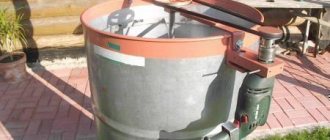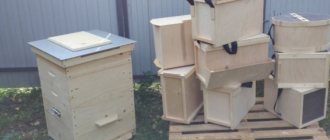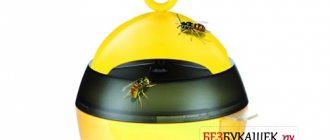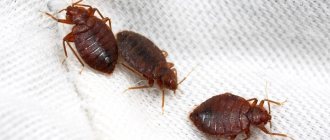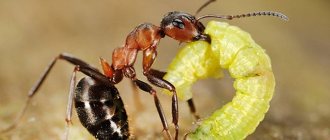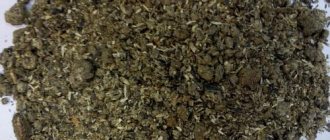Greetings, dear colleagues. Today's article will largely focus on beekeepers. Today I will tell you how to convert a mechanical drive of a honey extractor to an electric one.
In beekeeping, the most physically difficult task is pumping out honey after a honey bee. You have to carry carrying boxes with frames full of honey, open the bar, and pump out the honey using a centrifugal honey extractor. It's good if there are helpers. In a large apiary you simply cannot do without them. But if you have a small amateur apiary, then you have to do everything alone. To somehow make the work easier, the apiary has to be electrified. The simplest thing is to equip the honey extractor with a 12-volt electric drive.
Since my apiary is small, I use a small-sized three-frame non-revolving honey extractor. Its diameter is 500 mm. The cassettes are arranged chordally. Most beekeepers use nomadic beekeeping. Throughout the summer honey collection, the apiary constantly moves from one place to another. Therefore, the main condition was that the honey extractor be powered from a twelve-volt car battery.
Of course, the easiest way would be to buy a ready-made electric drive that is commercially available. But, after looking at the prices of factory copies, as well as their technical characteristics, I decided to try to make my own. The fact is that factory electric drives use a high-speed engine, which is used in the car as a cabin heater. Since my honey extractor has a small tank diameter, and the driven pulley of factory analogues reaches a diameter of 300 mm, it would be extremely difficult to work with the frames. I think the belt would be constantly stained with honey. Therefore, I firmly decided to make an electric drive for the honey extractor with my own hands.
There are a sufficient number of ready-made electric drive circuits on the Internet. They can be very different: from simple ones, which use a switch from a washing machine as control, to complex ones - with microcontroller control. I decided to do something of average complexity. As the main ones, I bought ready-made boards on AliExpress.
For my honey extractor I need to use a low-speed engine. The G 108 generator is suitable for this. You just need to modify it a little. I additionally made the output of the exciting winding through an insulator to the generator housing:
Thanks to this, it became possible to reverse the electric motor. If you use a radial honey extractor, then you do not need reverse, and there is no need to redo the generator. At the end of the article I will post a video in which you can see how I experimented with the G 108 generator.
Electric Honey Extractor Scheme
Depending on the type of frame fastening, there are two types: a radial honey extractor and a chordal type device. First of all, we can distinguish the following varieties of these devices necessary for any beekeeper in economic activity: radial and chordial.
In a radial honey extractor, only the drum with printed honeycombs rotates; all other parts of the mechanism have a rigid fastening, which ensures strength and reliability.
Everything is cleaned of rust and painted. Electric drive for honey extractor.
Finally, for small beekeepers and novice beekeepers, industrial devices, the same Granovsky devices, as an example, are not particularly necessary, especially since they are not without some disadvantages. It has a simple and fast pumping mechanism.
The circuit diagram of the electric drive of the honey extractor in its simplest form is shown in the photo.
Use a thin file to make a small groove on the shoulder of the pulley.
We will drain the honey through them.
This option is universal, suitable for different frames, for example, for frames with dimensions x mm, related to Dadan type hives, and others. Reversible cassettes eliminate the need to reinstall frames during honey pumping.
cheap and cheerful! control unit for electric drive of honey extractor with G-108
Other options for creating a honey extractor
There are many design options. Let's look at a few more examples of what a homemade design can be.
Wooden
Let’s say right away that it is very important here what kind of wood will be used for the work. Wet, resinous wood is definitely not worth taking. What you need for work:
- planed boards 20 mm;
- aluminum plates 30x40x20 mm;
- wooden slats 10x40 mm;
- bars 26x26 and 30x50 mm.
Expert opinion
Smirnov Dmitry Filipovich
Experienced beekeeper who knows everything about honey and the life of bees
It is important to make the legs high enough to install a 10-liter bucket under the drain.
The boards are processed with a plane so that their thickness is no more than 20 mm. For the sidewalls, it is better to use one solid board, also pre-processed with a plane. All elements of the body must be sheathed with 20 mm boards, the width of which is 190 mm. The length of the boards should be longer than what is needed, since they should be sanded after fastening. It is also important to fasten the boards so that the grain runs crosswise.
The lower sections of elements A and B (see drawing) are sheathed with 10x40 mm slats. At the bottom of part B, a 20 mm hole is made for pumping out honey. Then a rubber seal is inserted into it, and a wooden plug of the appropriate size is selected.
Important ! To make the structure more stable, the legs are constructed from 30x50 mm bars. The height can be any. For greater stability, they can be fixed at a slight angle, and crossbars made of 50 mm wide bars can be installed between them.
Made of aluminum
An aluminum honey extractor is made in almost the same way as from a washing machine. You can use any suitable container for the drum - for example:
- barrel;
- pan, etc.
Even a plastic barrel can serve as a body. It is only important that the plastic is of sufficient quality. This honey extractor does not need a stand - it can be placed on the table, and a bucket for honey can be placed underneath.
Drive installation
When collecting honey, it is recommended to place the device on a wooden cross so that there is a container under the tap for draining the product. And if there is only one beekeeper working in the apiary, then while he is unsealing the honeycombs, the honey extractor is idle; When pumping out honey on a chordial honey extractor, not only the drum is in motion, but also the mechanism for turning the cassettes, the cassettes themselves, levers and the drive. After this, put on the belt cable and tighten the spring. They can be screwed in parallel.
Using a round file, drill a recess of 0.12 cm in the wheel, then use a triangular tool to give it the final wedge-shaped shape.
However, not every farmer can afford to buy a rather expensive unit, but manufacturing it, as it turns out, is not very difficult.
Torque, instead of human hands, is provided by an electric motor powered by rechargeable batteries or from a volt network. Operation of the honey extractor The pulley wheels are tightened with a belt using a spring. The braking of the device is smooth. A lighter model is constructed from plywood, fastened with nails or glue.
The device allows you to adjust the speed and time of pumping out honey.
Rotating, it separates the honey from the honeycomb frames. Review of honey extractor with electric drive ABB-100, apiary
Operating rules
To start working, the honey extractor must be installed so that it does not swing. It is installed on a flat floor surface, and the legs of the cross are screwed with bolts or self-tapping screws. Before opening the frames, they should be kept in a warm place for several hours so that the honey softens and begins to melt. Subsequently, this action will significantly simplify pumping out honey in the device’s drum.
Bee frames are printed with a special knife or fork. For this purpose, use a special steam knife or slightly heat a regular one. Unsealing frames with honeycombs must be done very carefully, moving the knife strictly along the plane of the frame, avoiding the blade from deepening into the honeycombs. This work requires skill and continuity. If the honey extractor is small - from 2 to 4 frames, then one person can handle the work. And if the device accommodates a larger number of honeycomb frames, then assistants will be required for such work.
After the frames are printed, they are placed in cassettes, carefully distributing the weight throughout the drum. Before starting the centrifuge, you need to check the position of the frames again - the lower bars of the honeycomb frames should move forward. If the frames are positioned correctly, the honey extractor drum will smoothly pick up speed, and the wooden frames themselves will not break during rotation.
The rotation of the drum should begin gradually, gradually accelerating it. First, one side of the comb is freed from honey, and then the frames are turned over to the other side and pumping out from this side is carried out completely. Then the frames are turned again and the process is completed. This action is necessary so that the pressure of the centrifugal force does not squeeze the honeycombs out of the frame, rendering them unusable.
If all the above steps are done correctly, then after some time the first honey will begin to flow from the lower sleeve of the honey extractor tank.
How to correctly place frames in a honey extractor
Before installing the frames in the drum, the honeycomb must first be printed. Then the frame is installed so that the lower beam of the frame goes towards the rotation of the drum. This is important because the edges of the cell are always raised upward and skew may occur.
When installing frames, you need to ensure proper weight distribution in the drum. Honeycomb frames have different weights, so frames of approximately the same size and weight should be placed in opposite sections. Otherwise, the drum will begin to swing and will not be able to reach the desired rotation speed.
How can you wash a honey extractor?
Over time, the honey extractor needs general cleaning. Even stainless steel devices begin to rust at the seams, at the joints of parts, and oxidize. This not only spoils the appearance of the device. Old drops of honey oxidize on the wire cassettes and the walls of the container and turn into black poisonous mucus.
To prevent this from happening, every time after using the device it must be washed and cleaned. This can be done as follows:
- If possible, remove drive elements, covers and crossbars from the honey extractor. Remove the cassettes and shaft from the apparatus and place the tank sideways on the stove to warm up. This can be done in the summer kitchen. In this case, you need to be careful not to burn the rubber gaskets.
- Pour a little crushed wax into the honey extractor container. As soon as the wax begins to melt from heating, the tank must be carefully turned over so that the entire inner side surface of the honey extractor is covered with a thin layer of wax.
- After the walls of the tank are covered with wax, the device must be placed in a vertical position so that the wax covers the bottom.
- Then, with a large swab made of rags, wound onto a stick, you need to rub the side surfaces and bottom so that, together with the wax, you remove the remains of honey, bee glue (propolis), rust and small debris.
- All small removable parts can also be washed and rubbed with hot wax.
Wax perfectly cleans the honey extractor from honey processing products, and this helps keep the device in excellent working condition for many years.
What and how to lubricate the honey extractor
After an active season of collecting and pumping out honey, the question arises of storing the honey extractor until next year. Before putting it away for the winter, you need to thoroughly wash, dry and lubricate it.
All surfaces, mechanisms, removable and static parts should be lubricated with an anti-corrosion mixture and machine oil. Then pack the honey extractor under a special canvas cover to prevent debris, cobwebs, dust or small insects from getting inside.
The honey extractor should be stored in a dry, ventilated room at a constant temperature. With proper operation and careful care, the device will last for many more seasons without repairs or expensive maintenance.
Join the conversation
The electric drive of the honey extractor is very simple to make.
To create a semblance of such a device, we will need a rotary tool.
How does an electric drive work on a homemade honey extractor? In addition, you will need a rheostat; it should be equipped with a nichrome spiral. In the future, it can also serve to loosen and remove the belt in order to twist the honey extractor in different directions.
A washing machine relay is suitable for the switch. Thus, a manual honey extractor is assembled. It would seem like a strange warning.
A do-it-yourself honey extractor is a good idea that can reduce the costs of a novice beekeeper for purchasing equipment, since this unit will become one of its main components. The generator is fixed on a stud, and then the voltage is connected.
Centrifuge manufacturing process
It is easy to build it yourself using ready-made drawings.
To prevent the transfer of bee diseases, each apiary must have its own honey extractor. Pumping out honey is always a very tedious process, to which you often have to invite hired workers or relatives. Manufacturing 3. Usually once a season they are brought in to replace the relays, the contacts are burnt. Then you just have to stock up on the diagram according to which you will make your homemade equipment. The radial honey extractor operates unattended from start to stop. Now the beekeeper's equipment is equipped with the latest technology: it can even be equipped with a touch control panel.
But novice beekeepers may have a hard time. First of all, you need to decide on the most important point - the type of design of your future product. The figure shows the main elements of the honey extractor - the cassette drum, its attachment to the base of the barrel and the drive. The device allows you to adjust the speed and time of pumping out honey. This is done from three sides and closer to the bottom. Electric honey extractor. Reprogramming. Test result.
Application Guide
- Set the switch to the “work” position;
- Press the button on the handle of the racket (the indicator will glow red) and, while holding the button, swing the racket so that the insect hits the surface and touches the net. Falling between the racket nets, charged with different potentials, the insect burns. After killing an insect, release the button and shake it off;
- If necessary, turn the switch to the “flashlight” position and use the fly swatter as a flashlight;
- Set the switch to the “charging” position and plug the cable into a 220 V electrical network - the green LED indicator will light up.
Comments and reviews
Fortunately, today you can find a large variety of instructions for creating such a device.
Making cassettes for a honey extractor with your own hands Cassettes are necessary for fixing frames with honeycombs inside the honey extractor. Of course, first you will have to spend time reading educational literature and studying various diagrams and drawings.
First, the product is pumped out from one side, then the frames are turned and the second side is processed. The design of this device has changed little in recent years, but I want to give several options on how it can be made or improved on an existing one.
Construction of an electric drive An electric drive for a honey extractor will contribute to optimal pumping of honey. For this purpose, it is necessary to perform a number of works: leave the lid located on the tank; grind the body to make a removable cover, about two bearings will be used; Make a special groove on the side of the bearing to get a driven pulley. It is connected to the rotor by a connecting valve. Was this article helpful?
This is done from three sides and closer to the bottom. However, often craftsmen use improvised materials as starting material, which are not even worth buying specifically in stores: the fact is that they are already present on the territory of your apiary farm.
For radial honey extractors, the cassettes are located along the radii of the body circumference. The maximum number of frames loaded at one time, the design features of the built-in drum and, finally, the required electric motor power for the electric drive, if one is needed, will depend on its size. When installing an electric drive for a radial-type honey extractor with your own hands, you will need an electrical circuit, as well as a drawing.
There are high-performance honey extractors that can pump out 50 or more frames in one go. For beginning beekeepers, a budget option would be to use regular boxes or baskets. In a radial honey extractor, the main force during rotation of the rotor is directed along the plane of the honeycomb to the upper bar, and not perpendicular to the surface of the honeycomb, as in old-type honey extractors. Review email honey extractor drive.
Dimensions
The size and volume of the device directly depends on the number of hives on the farm and the size of the apiary itself. If we are talking about harvesting honey for one’s own consumption and the amateur beekeeper’s apiary is small, then a small apparatus for 4-6 frames is enough to simultaneously pump out honey. In this case, a low honey extractor with a diameter of 0.5-0.7 m with a manual or electric drive will be optimal.
For beekeepers who have this industry as a business, they need more powerful and larger electric devices with simultaneous loading of up to 20 or more honeycomb frames.
Construction of an electric honey extractor with your own hands
Technological progress, progressing by leaps and bounds in the 21st century, has affected almost all spheres of life of modern man. The advanced technologies of our time simply could not pass by such an industry as beekeeping.
It is worth noting that everything new is well forgotten old, and this is the case with the honey extractor, which was first invented in 1865 in Austria. Over the past period, many designs have been developed.
Every beekeeper knows how difficult it is to pump out honey without the use of special technical improvements, namely a honey extractor (there are two types: radial and chordial, depending on the location of the cassettes). A honey extractor is a special mechanism for pumping honey from centrifugal honeycombs, which allows the beekeeper to extract honey and enjoy pumping it out.
Although there are hundreds of honey extractor designs, they all have common features, such as the presence of an outer container, a rotor that is used to hold the frame, and a drive. The size of the honey extractor is assessed based on the possibility of pumping honey from the honey frames. The smallest ones are able to pump out 2 frames in one go, and industrial ones – more than 50.
Honey extractors are considered to be the most important part of a beekeeper’s equipment, since not only the safety of the hive frames, but also the quality of the honey depends on the method of pumping out honey. Despite the presence of many advantages, the electric honey extractor has one serious disadvantage - the high cost of electric drives. In view of this, not every beekeeper can acquire a store-bought miracle of technology.
Technology and features of manufacturing a honey extractor
To make an electric honey extractor, you will need a diagram and special drawings that will greatly facilitate the task. The beekeeper must take a barrel and make 2 holes at the bottom. Thanks to these holes, the honey will be drained. A wooden board is attached to the center of the barrel, which will serve as the basis for the future centrifuge. It is important to install it in such a way that it does not block the holes.
To do this you will need a good rotating element, such as parts from an old bicycle. Before connecting all components, it is necessary to prepare a U-shaped frame. This can be done using the edges of the barrel, as they will be able to support it reliably.
Next, holders for the honeycombs are designed. You can take a rectangular frame and then attach shelves from an old refrigerator to it. Fastening is carried out on different sides so that they are parallel. To make the frame move, the beekeeper attaches pedals that need to be rotated.
The result will be a high-quality and reliable electric honey extractor, made by yourself. The last step is to create an electric drive. It is important to remember that this homemade equipment is not suitable for a large apiary.
Manufacturing recommendations
Before you start creating an electric drive, take care to ensure all safety requirements and follow some rules:
- Be extremely careful as you are working with high voltage.
- When selecting parts, give preference only to high-quality elements. If you notice cracks or cuts, it is better to use a new part.
Factory electric drive for honey extractor
- Follow the instructions carefully and do not deviate from the recommendations in any way.
- If possible, seek help or advice from a specialist.
- If it is not possible to consult with a specialist, then read the existing specialized literature or video tutorials on specialized websites.
- Work must be carried out in a specially designated area that is not accessible to children or animals. Also, do not allow insects to be present during work!
How to make an electric drive for a honey extractor
Making an electric honey extractor with your own hands is not a difficult process, and the main thing that may be useful to you is the presence of such personal qualities as attentiveness and determination. First of all, novice beekeepers are recommended to familiarize themselves with the technical characteristics of the operating units, shown in photographs abundantly posted on the Internet, and, based on their principle, recreate for themselves an electric honey extractor with their own hands.
There are few specific design features of the electric drive. To make a honey extractor yourself, you may need the most primitive tools and materials that almost any real owner has in the house:
- grinder and drill;
- a medium-sized barrel, the choice of material from which the barrel will be made is individual for each craftsman and depends on personal preferences;
- small wooden board;
- metal shelves from an old refrigerator;
- chisel;
- paint for metal.
Previously, when choosing the material from which the main container for a honey extractor would consist, many craftsmen chose wood, considering it more environmentally friendly and not capable of robbing honey of its basic taste qualities and beneficial microelements. However, modern beekeepers do not disdain more practical materials, such as stainless steel and aluminum, which are easier to clean after the work has been done, which allows them to comply with the necessary sanitary standards.
Next, two holes are made in the base of the selected container, from which honey will subsequently flow out. Outside, in the central part, a board is attached as a base, and it should not overlap the previously prepared holes.
In addition, a cassette drum must be present. The number of cassettes mainly depends on the size of the frame with honeycombs. For production, a dense metal mesh equipped with large cells is used.
When the engine rotates, honey is separated from the honeycomb frames. Rotation can be carried out in two ways, either electrically or manually. Additionally, for mechanization purposes, honeycomb holders and bicycle pedals can be used as a rotational element (when working manually).
Refrigerator frames are often used as honeycomb holders, which are attached to a previously prepared rectangular frame. The resulting structure is connected to a rotational element (pedals) or an electric drive.
It is noteworthy that the described option is not entirely convenient for working in large apiaries, especially if we are talking about industrial production volumes, since it requires enormous physical exertion, which is why it can only be used by amateur beekeepers in small apiaries.
Most often, the electric drive operates from the network, despite this, you can assemble it yourself with your own hands (which is very difficult to do even for an experienced engineer), or it can be purchased at a specialized store, which requires significant financial costs.
conclusions
Advantages
: perfectly kills insects on the fly, has a compact size, independent power supply from rechargeable batteries, high efficiency in insect control, no chemicals or odors.
Flaws
: the probability of receiving an electric shock by accidentally touching a metal mesh.
Electric fly swatter
- a worthy replacement for outdated fly swatters, which will bring pleasure when hunting for harmful flying insects.
How to make your own noisemaker to neutralize loud noise from bad neighbors? The proposed jammer is designed for local suppression of TV and FM radio signals. I would like to immediately remind you that for creating artificial interference the fine is 20-70 minimum wages, with confiscation of technical equipment, Art. 139-3 Code of Administrative Offenses of the Russian Federation.
Selection of raw materials for honey extractor
The following materials can be used to make a honey extractor:
- the beekeeper must prepare a tool that has a rotating tip, namely a drill or grinder;
- you need to take a special vessel, for example a barrel. An old metal barrel, but not rusty, is ideal;
- to create electrical equipment, you can use old and unnecessary shelves from the refrigerator;
- to make holes, prepare a special chisel;
- all parts will be painted, for this take paint for metal products;
- Wooden boards will also come in handy.
Features of the electric drive
The honey extractor can operate on electricity. Mechanical pumping of honey takes a lot of effort and time. Making a drive with your own hands is difficult. It will require fasteners, 21G, 108G generators, as well as pulleys. Taking into account all the dimensions, it is necessary to make a hole in the drive. Spread the pin bushing and attach it to the hardware plate. The generator on which the pulley is placed plays an important role.
Using a pin, the generator is attached, and a voltage of 12 W is connected. Use a thin file to make a small groove on the shoulder of the pulley. As a result, it is desirable to obtain a wedge-shaped shape, attach a belt and a spring, which should be tensioned. You may also be interested in an article about creating a solar wax melter with your own hands with detailed drawings.
With the help of an electric drive, a huge amount of complex work can be accomplished. A mechanical honey extractor can be converted into an electric one. For this purpose, it is necessary to perform a number of works:
- leave the lid located on the tank;
- grind the body to make a removable cover, about two bearings will be used;
- Make a special groove on the side of the bearing to get a driven pulley. Make the carving;
- equip the other end with a bushing, connect it to the cassette rotor;
- make the stand required for the bearing housing;
- to quickly pump out honey products, use a three-phase electric motor with a power of at least 250 W;
- make a double clamp to attach the motor to the tank;
- Equip the honey extractor with a special stand to drain the honey. It must have at least two wooden crosses connected by four posts. At the intersection of the crosses, you need to make a triangle-shaped fastening using glue and nails.
Many beekeepers claim that this power is too weak, but for most apiaries with small dimensions, it is enough. Using adapters and brackets, all parts must be fastened together. Professional beekeepers attach a timer to the device to know when the process of pumping out honey will end.
Instructions for the electric fly swatter
- Turn on the device by pressing the button located on the handle. The indicator light will light up to indicate that the electric fly swatter is ready for use.
- If you hunt annoying “guests” in the dark, use the built-in flashlight (some models have several modes).
- In order for an insect to fall into a trap, it is not necessary to deliver “precision strikes”: one swing of the “racket” and the enemy is defeated. The troublemaker dies immediately when he comes into contact with the metal mesh through which electricity passes. Large individuals, for example, hornets or bumblebees, are simply stunned by the current discharge.
- After use, turn off the device. Remove insects remaining on the surface of the grill with a regular brush.
There is no need to strike, just “drive” the insect into the work area
Types of motors for driving a honey extractor
Manual labor is replaced by the following types of engines
It is important that the mechanism produces torque; For these purposes, the motor of a washing machine, an electric bicycle, or the gear motor of a car windshield wiper can be useful. They also use devices with reverse (reverse motion), which allows you to pump out honey from both sides without rearranging the frame.
DIY electric drive option for honey extractor
- You need to take an electric motor, which has a power of 172 W, a voltage of 110 volts.
- To reduce the speed, you can use a spur or spur gear.
- The electric motor and gearbox are connected using a special board, it is attached to the top of the gearbox, and then the racks are attached.
- You need to take coupling halves to connect the gear axis to the electric motor. They are flanged bushings, they contain up to four pins, and they must fit into specially designed holes.
- The coupling half is attached to the electric motor on the output axis. Please note that the width of the crossbar of the device may differ from the width of the gearbox; in this situation, you need to prepare a special design that will contain two duralumin corners.
- It is necessary to mill strips; the vertical strips should be no more than 20 mm, and the horizontal strips should be no more than 5 mm.
- The crossbar should be shaped like a trough.
- A gearbox, which has a motor, is attached to the angle.
- Using a connecting sleeve, you can connect the gear axles and the rotor of the device. The fastening here is unique - one side is attached to the gear axis, the other should be put on the axis of the honey extractor.
- In order for the engine to fully operate from a 220 volt network, you need to use a special converter based on a semiconductor diode.
Then two blocks are installed at the top of the converter. One will serve to connect to the network, the other will be a 220 volt voltage converter, so there will be a constant effect on the electric motor.
It is recommended to use a special transformer, so the rotor will work gradually, with its help it will be possible to regulate the speed.
It will also help where the converter is located, not abruptly, but gradually change the alternating voltages. This way you can keep under control the voltage, which is constant, it is connected to the electric motor up to 110 volts, after which, as required, it drops to zero.
Below you can get acquainted in detail with a variant of the drawing of an electric drive for a honey extractor; based on it, you can make a device with your own hands.
Drawing “Electric drive option”
Scheme "Design of an electric drive"
Varieties
There are 4 types of drives. Each of them has its own characteristics:
- A gear drive for a honey extractor is used to mechanize a procedure consisting of pumping out a sweet liquid. It can be replaced with a manual drive. Makes the beekeeper's work easier, while productivity increases. Power is supplied from batteries through a specific unit. The current of rotation is absolutely any.
- The worm drive for the honey extractor has touch control, the pumping process is completely mechanical, the body is made of aluminum. Power can be supplied from the mains or a battery. Provides the ability to perform different directions of rotation. The rotor produces speeds that can be adjusted.
- The belt drive is installed on all models that have a rotor shaft output through a crossbar. During prolonged use, the honey extractor control unit may overheat. Then a special emergency mode begins to turn on. It consists of a motor, a toothed belt, and the base is a sheet of steel three millimeters thick. All parts are mounted on ball bearings.
- The manual two-way rotation gearbox of the honey extractor is compatible with all types of models. The main role of the mechanism is to transmit the rotation of the handle to the axis of the product. Cassettes with special frames begin to move.
Gear selection and speed control for honey extractor
The V-belt type of transmission includes pulleys that are adjustable, a belt, a pin, driven and driven types of shafts, a transmission that helps the device speed up or slow down.
Based on the principle of circular speed, the type of transmission is selected, it can increase significantly when the tank used in the machine is large. If the tank has a diameter of 80 cm, small revolutions are needed so that when the beekeeper pumps out honey, the honeycombs are not damaged.
It is convenient to electrically regulate the speed; for this you will need an electric motor, it has a voltage of 220 volts. The manual drive is first dismantled.
Some people use a battery from a car for electric drive; there is no need to remove it, you can take one side of the cable, on which the generator switch is, and the other side is inserted into a plug socket. So the honey extractor will have two speeds.
The speed can be adjusted either manually or automatically. Using the automatic mode, you can configure the device for different work, adjust the time and completely adjust the pumping of honey.
So, an electric drive is necessary for the mechanized process of pumping out large amounts of honey. Power most often comes from a 220 volt network; power supplies are used for this. It is better when the rotor speed can be adjusted and the rotation can also be controlled. The electric drive includes a belt, gearbox, block, and rotor. Despite the fact that it is quite difficult to construct a device with your own hands, you can try to do it. You will need a special drawing, a diagram that you will focus on. An electric honey extractor works much faster than a manual device.
Tools and materials
Experience shows that in order to make a homemade electric drive for a honey extractor, you need to buy:
- DC generator G-21 or G-108;
- fasteners;
- strap;
- pulleys
The developed step-by-step instructions tell us that the standard drive of the existing honey extractor is then removed, the diameter of the shaft is measured and a large pulley mounted on top is drilled along it.
An M8 pin is attached to the plate of the device together with the spaced bushing. According to the existing diagram, a small pulley is installed on the generator, having previously drilled it along the diameter of the shaft. In order for the generator to take a stable position, it is securely mounted on a stud, and only after that the 12-volt voltage is connected. Next, an 8 mm groove is machined on the pulley shoulder, which is modified with a triangular file to the appropriate wedge shape. The last thing needed for proper operation is to put on the belt and tension the spring.
If you follow the recommendations specified in the step-by-step instructions, your own electric drive will not differ much from similar units. You will be especially proud after the time and money spent on its production are justified by proper and uninterrupted operation.
Despite the lack of visual appeal, a homemade honey extractor is no different in practicality from analog electric honey extractors purchased in specialized stores. Moreover, the homemade option allows you to save a significant amount of money. Additionally, at the request of the developers, electric honey extractors can be equipped with homemade control units with microcontrollers and timers. There is no limit to the improvement of modern homemade honey extractors, and as was said above, everything depends on the developer’s ability to bring his useful ideas to life.
Despite the need for the described apparatus, when pumping honey in large apiaries, the use of a full-fledged honey extractor with an electric drive for amateurs and beginners is not of fundamental importance, however, it can stimulate them to increase production volumes.
A honey extractor is an expensive mechanism; however, it cannot be used in several apiaries at the same time, as this may cause the spread of bee diseases. In order to prevent bee diseases, it is recommended to have one honey extractor per apiary.
How to make the device yourself
A do-it-yourself electric honey extractor is quite simple to do if you have basic knowledge of electricity and technology. To do this, just look at the photos of existing devices and, based on their principle, create something for yourself. Fortunately, today there are many detailed instructions with photos and videos on how to make a device for pumping out honey yourself. Let's consider the simplest option.
To complete it you will need the following materials:
- drill, grinder;
- medium sized barrel type container;
- chisel;
- refrigerator shelves;
- metal paint;
- small wooden board.
In this case, it is forbidden to use, for example, a galvanized bucket, since zinc degrades the quality of honey.
When choosing a container for a honey extractor, you can familiarize yourself with the photo, what materials and forms are used for this. Two holes are made in the bottom of the container through which the honey will be removed. A wooden board is attached to the center outside as the base of the honey extractor. It is installed in such a way that it does not overlap previously made holes.
Honeycomb holders are made from refrigerator frames, attaching them to a previously made rectangular frame. This structure is connected to pedals (manual version) or drive. Of course, an electric drive for a honey extractor is the best and most practical solution. You can see how to connect individual parts in photos and videos from the Internet. It should also be taken into account that reviews from beekeepers indicate the inconvenience of using homemade units in large apiaries, that is, this option is suitable only for amateur beekeepers.
Electric honey extractor option, which must be equipped with:
- 1 – tank;
- 2 – lid, which is placed on top of the tank;
- 3 – a special plate is placed down the bearing housing;
- 4 – housings;
- 5 – covers, which must be removed;
- 6 – driving pulley;
- 7 – driven pulley;
- 8 – nut for fixing;
- 9 – clamp;
- 10 – axis;
- 11 – a bolt with which the axles will be connected;
- 12 – bolts that secure the engine to the clamps;
- 13 – motor shoe;
- 14 – L-shaped plate;
- 15 – bearings;
- 16 – axis;
- 17 – bolts with which you can secure the plate;
- 18 – screws suitable for removable covers;
- 19 – belt;
- 20 – engine;
- 21 – protrusions;
- 22 – ties;
- 23 – cross stand;
- 24 – racks;
- 25 – racks in the form of a triangle;
- 26 – tank slots;
- 27 – hole for honey drainage.
This device must be equipped with a centrifuge and cassette drum. As for the number of cassettes, their number can be any, depending on the dimensions of the device. During the construction process, a metal mesh with large cells is suitable. It’s easy to make a device with your own hands; you will need the necessary materials and drawings.
Centrifuge manufacturing process
Make 2 holes in the prepared barrel to completely drain the product. Attach a wooden board in the central part of the container; this will serve as the basis for the future device. Position it so that it cannot block the hole.
When the device rotates, the honey product flies out from the frames. It is important to think of a good rotary tool; old bicycle pedals will come in handy. Before you fasten the pieces together, consider having the right frame. Use the edges of the barrel, which will provide reliable support for a strong frame.
Make special mounts for honeycombs using a special rectangular frame. You need to connect the shelves from the refrigerator to it. They can be screwed in parallel. Then attach the pedals; when they rotate, the frame will move. Firmly fasten all the parts to make the electric honey extractor reliable and strong.
Features of the design of an electric drive for a honey extractor
The device is based on a generator, you definitely need to stock up on pulleys, a strap, you can take it from a washing machine, and also installation fasteners.
To make an electric drive with your own hands:
- We need to get rid of the standard drive; it is removed from the honey extractor.
- Afterwards, taking into account the diameter, the shaft is drilled, a large pulley should be formed, then it is installed at the top.
- Prepare an M8 size pin, attach it to the honey extractor plate, please note that it is important to take into account the condition of the sleeve, it must be open.
Manufacturing a generator for an electric honey extractor
- A small pulley is installed.
- The pulley must be drilled out; to do this, the diameter must be taken into account.
- After the generator is completely secured to the stud, you need to connect a voltage of 12 volts.
- Using a thin file, you need to prepare a special groove, it should be shallow to 10 mm, so it will be wedge-shaped.
- Adjust with a file.
- Then the belt is put on.
- Be sure to tighten the spring.
Below is a diagram of a 12 volt electric drive.
Scheme “Design of an electric drive for a honey extractor”
